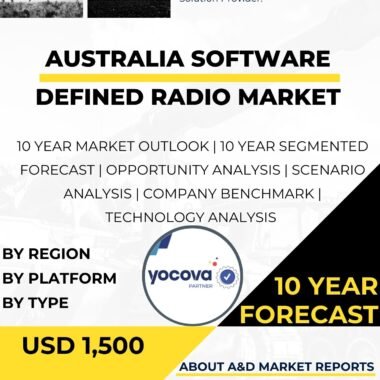Description
The Network Centric Warfare (NCW) market in Japan has gained significant importance as the nation focuses on modernizing its defense capabilities and enhancing its military effectiveness in response to evolving security challenges in the Indo-Pacific region. NCW is a concept that leverages advanced information technology, communication systems, and data sharing to enhance decision-making, situational awareness, and coordination among military forces. As Japan seeks to bolster its defense posture and improve joint operations, the demand for advanced NCW solutions has grown, leading to increased research, development, and investment in this field.
NCW in Japan encompasses a wide range of technologies and systems, including command and control (C2) systems, communication networks, data fusion and analysis tools, intelligence, surveillance, and reconnaissance (ISR) systems, and cyber defense capabilities. These elements work together to create a networked environment that facilitates real-time information exchange and collaborative decision-making across the entire military force.
One of the primary applications of NCW in Japan is in joint operations and multi-domain warfare. The concept of NCW allows Japan’s military branches (Ground Self-Defense Force, Maritime Self-Defense Force, and Air Self-Defense Force) to coordinate and share information seamlessly, enhancing their ability to conduct joint operations and respond to multi-domain threats effectively.
Moreover, NCW enhances situational awareness by integrating data from various sources, such as satellite imagery, ground-based sensors, and unmanned aerial vehicles (UAVs). This comprehensive situational awareness capability enables Japan to detect and respond to threats more rapidly and accurately.
Additionally, NCW contributes to Japan’s missile defense capabilities. Real-time data sharing and coordination among different missile defense assets enable the nation to intercept and neutralize incoming threats more effectively, providing a robust defense against ballistic missiles and other airborne threats.
As Japan emphasizes indigenous defense capabilities, the domestic production and development of NCW solutions have seen substantial growth. Collaborations between the government, defense industry, and research institutions have fostered innovation, leading to the creation of advanced NCW systems tailored to Japan’s specific defense requirements.
Japan’s alliance with the United States has also played a significant role in the development of its NCW capabilities. Through this partnership, Japan has access to advanced technologies and expertise, contributing to the modernization of its defense forces and enhancing interoperability with allied nations.
The NCW market in Japan also benefits from advancements in information technology, artificial intelligence (AI), and secure communication systems. Manufacturers have leveraged these developments to create NCW solutions that are resilient, adaptive, and capable of handling large volumes of data in real-time.
However, the NCW market in Japan also faces challenges related to cybersecurity, interoperability, and human factors. Ensuring the security and resilience of communication networks and data sharing platforms is crucial, as potential adversaries may attempt cyber-attacks to disrupt military operations.
Interoperability between different NCW systems and platforms is essential for seamless information sharing and coordination. Standardizing communication protocols and data formats helps overcome these challenges.
Moreover, addressing human factors, such as training and familiarity with NCW systems, is crucial for ensuring that military personnel can effectively utilize these technologies in high-pressure and rapidly evolving operational environments.
In conclusion, the Network Centric Warfare market in Japan has witnessed significant growth and strategic importance, driven by the nation’s focus on modernizing its defense capabilities and enhancing its military effectiveness in response to evolving security challenges. NCW solutions provide critical capabilities for joint operations, situational awareness, missile defense, and multi-domain warfare, making them integral to Japan’s defense strategy. The collaboration between the government, defense industry, and research institutions, as well as international partnerships with allied nations, fosters innovation and contributes to the growth of the domestic NCW market. Addressing challenges related to cybersecurity, interoperability, and human factors is crucial for further enhancing Japan’s NCW capabilities and ensuring that the nation’s defense forces remain equipped with advanced and resilient NCW systems to effectively respond to evolving security threats in the Indo-Pacific region. With its strategic focus on enhancing indigenous defense capabilities, Japan remains committed to leveraging advanced NCW technologies to enhance its defense posture and contribute to regional and global security.




